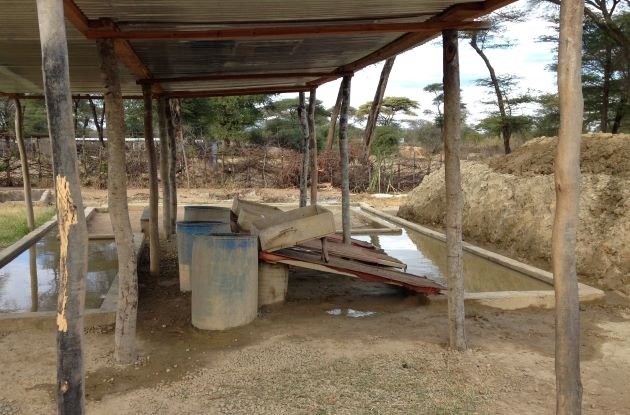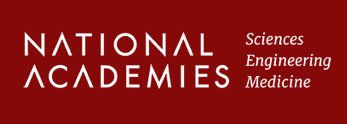|
Cycle 6 (2017 Deadline)
Exploring the fate of mercury in artisanal gold mining of the Lake Victoria Gold Field
PI: Clavery Tungaraza, tungaraza@suanet.ac.tz, Sokoine University of Agriculture
U.S. Partner: Mark Cohen, National Oceanic and Atmospheric Administration (NOAA)
Project Dates: December 2017 - June 2023
Project Overview:
 | | A typical artisanal gold extraction site at one of PEER study area. Photo credit: Clavery Tungaraza, Sokoine University of Agriculture |
This study will investigate quantitative and qualitative mercury availability in the environment surrounding artisanal and small-scale gold mining (ASGM) locations in Tanzania, where mercury contamination is of concern with regard to the health of community members and others who consume food products originating from the area. Although mercury contamination can be lessened by appropriate controls and proper handling methods, such measures are not routinely applied in Tanzania, where mercury has been documented in different environments and studies. Mercury can be transported away from emission sources by riverine systems to large water bodies like Lake Victoria. The resulting fish contamination can be significant, which is a particularly serious issue as fish are the major protein source in the region and the whole country. In Tanzania, very little data is available on levels of methylmercury in biota and sediments and on the contribution that ASGM activities make to these levels. Further, there is little information on the relative importance of riverine and atmospheric processes in transporting mercury from sources to ecosystems.
All these aspects must be taken into account in order to understand the magnitude of mercury impacts on the environment and on human beings. This project will develop data on levels of mercury downwind and downstream from ASGM activities in water, suspended particulate matter, sediments, and fish and improve understanding of spatiotemporal variations of mercury levels. Inclusion of methylmercury in the analysis represents a significant extension of the PI’s earlier work.
Tanzania is now in the process of ratifying the Minamata Convention, a key goal of which is to raise awareness of health concerns, especially in developing countries, resulting from mercury exposure of vulnerable populations, especially women and children. Mercury emissions from ASGM activities in Tanzania cause food chain contamination that poses direct threats to vulnerable populations under the Convention.
In preparation for ratifying the Minamata Convention, Tanzania needs to establish country-based information on the sources and extent of mercury contamination. The data and analysis generated in this project will help inform policies for protection of water quality and foodstuff safety, as well as provide scientific information to aid the formulation of the legal framework on mercury that will be needed for government regulations.
Summary of Recent Events
The primary focus of this project was on mercury analysis in soil, sediments, vegetables, water, and fish samples. This approach aligned with the proposal's planning, targeting specific mining sites across various regions in Tanzania. Specifically, the sites were located in the Lake zone encompassing Mgusu, Nyarugusu, and Rwamgasa in the Geita region; the central region in Singida, including London and Sekenke; and the southern highlands spanning Iringa (Nyakavalanga, Itengulinyi, and Ilhanzutwa) and Mbeya (Makongolosi and Itumbi) regions. The sampling strategy was designed to cover distinct weather seasons known to influence mercury distribution in diverse environments. One significant milestone was the establishment of a functional laboratory at the PI’s university. Thanks to the support from the PEER program, the laboratory was equipped with a new automated total mercury analyzer, an automated methyl mercury analyzer, a distillation system, a freeze dryer, and associated reagents and supplies. Comprehensive training for technical staff and researchers was conducted on the new equipment to enhance capacity. This training even extended to the team’s project partners at NOAA and the Smithsonian Environmental Research Center (SERC).
While notable achievements have been made, some setbacks were encountered due to various factors. The study area scope was reduced by excluding the Iringa region (Nyakavalanga, Itengulinyi, and Ilhanzutwa) because of the diminishing mining activities there. Similarly, the Mbeya region (Makongolosi and Itumbi) saw limited coverage due to shifting land use from mining sites to settlements. The collected samples from these areas reflected lower residues resulting from past activities. It was noted that activities in Itumbi were relatively new and not as intensive.
Dr. Tungaraza and his team also successfully customized the method for total mercury and methyl mercury analyses, though the analysis of methyl mercury faced delays due to postponed installation of the analytical instrument. Furthermore, the onset of the COVID-19 pandemic proved to be a major obstacle, significantly impacting the project's timely progress. The pandemic not only hindered movement but also disrupted the supply chain for essential chemicals and materials from abroad. The imposed travel restrictions affected not only the MSc student but also the entire research team, leading to the cancellation of some fieldwork and global workshops on mercury.
With regard to broader impacts, the establishment of a reliable mercury analytical laboratory at Sokoine University of Agriculture presents significant advantages for enhancing our understanding of mercury distribution within the Tanzanian environment. Given that one of the major sources of mercury contamination is the element’s use for gold extraction in artisanal mining activities, having a facility for accurate and accessible analysis is crucial. This laboratory not only ensures greater certainty in assessing mercury levels but also acts as a catalyst for further research on mercury-related matters. Moreover, the successful setup of this laboratory has attracted interest from various institutions seeking analytical support. This broader recognition underscores the laboratory's capability and expertise, encouraging collaborations and partnerships that contribute to a comprehensive understanding of mercury's impacts and mitigation strategies. The University has become a member of the Global Observation System for Mercury (GOS4M) and the Global Mercury Passive Network (Canada), actively participating in atmospheric mercury sampling. This network employs an alternative and cost-effective approach using Mercury Passive Air Samplers (MerPAs) to sample and analyze atmospheric mercury. Project researchers regularly receive mercury samplers every three months, which are employed for sampling in Tanzania and later analyzed at the University of Toronto in Canada. Lastly, active engagement has been established through a monthly atmospheric sampling program organized by the Ministry of Environment of Japan. This program involves four regional countries--Tanzania, Namibia, Ghana, and the Republic of South Africa. Each country was provided with sampling instruments, which were first deployed for sampling on July 31, 2023. The program aims to contribute atmospheric mercury data to support the implementation of the Minamata Convention.
The project team collaborated with a student from Mbeya University to finalize a publication on mercury, and Dr. Tungaraza and colleagues have two draft publications in process at the time the final report was submitted in August 2023. Although the project has ended, the PI indicates that related activities will continue with the support of new initiatives accessed during the implementation of the PEER project as described above. These initiatives will help to undertake atmospheric mercury sampling, which was not done during the PEER program. They will be integrated with PEER achievements through the knowledge of the Hybrid Single-Particle Lagrangian Integrated Trajectory (HYSPLIT) model gained through PEER-supported collaboration with the project partner at NOAA. Dr. Tungaraza also expects to continue his collaboration with NOAA researchers to highlight the problem of mercury contamination in the Lake Victoria basin and the need for regional monitoring of this pollution problem as an element of overall regional health monitoring efforts.
Back to PEER Cycle 6 Grant Recipients
|
|
|
|




